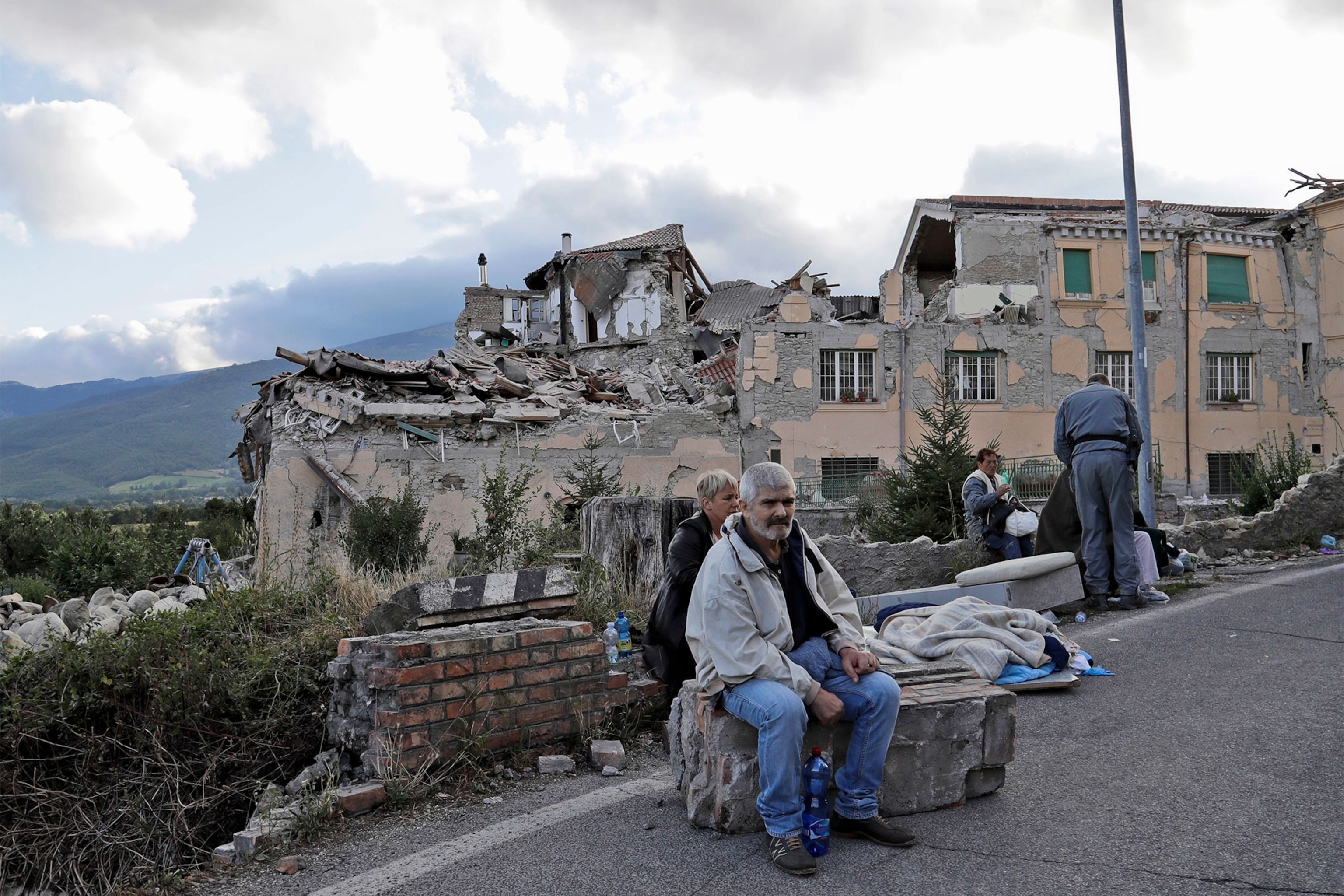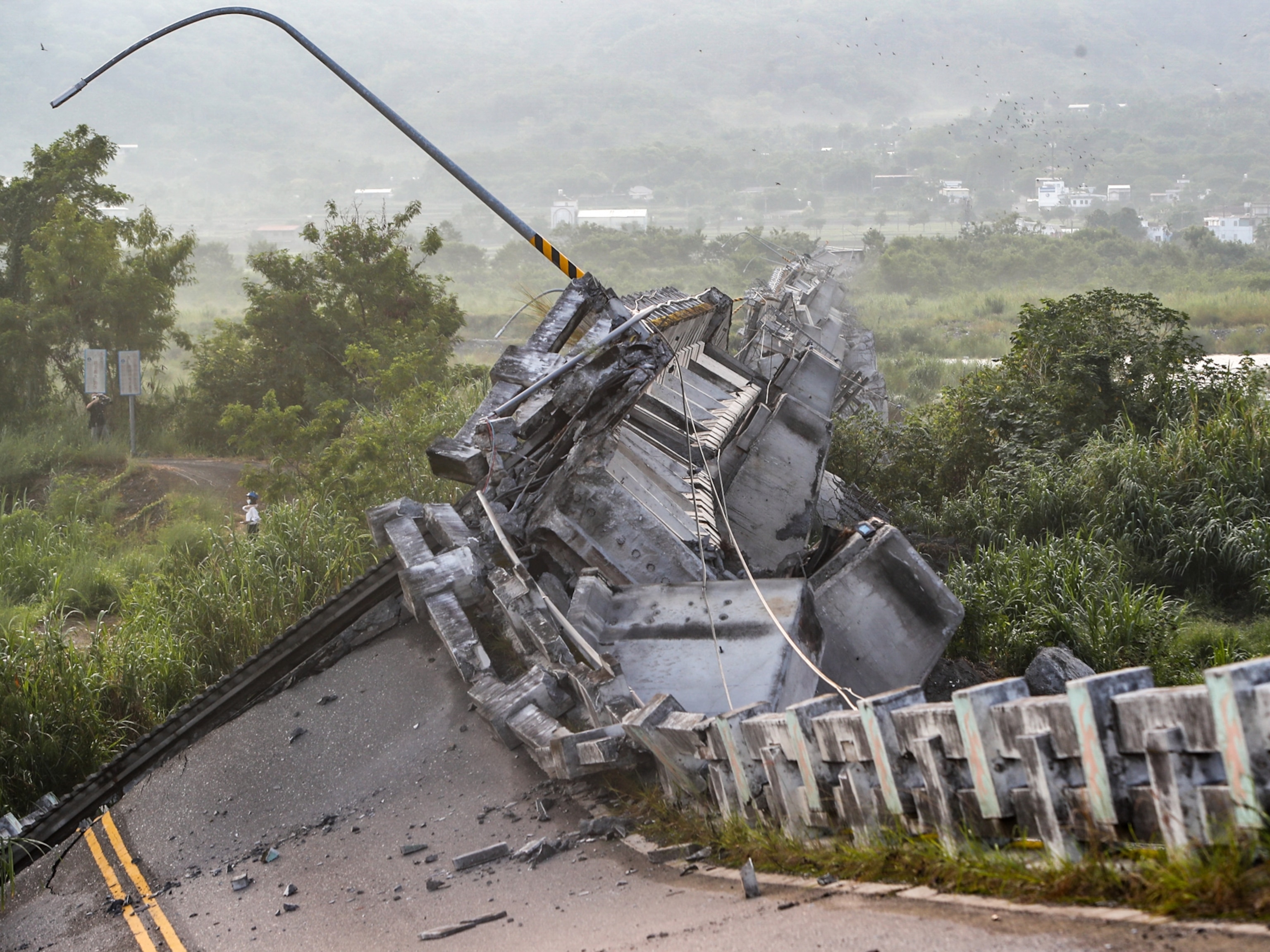Earthquakes in Italy, Myanmar Show Power of World’s Fault Lines
The pair of major quakes struck regions known for geological volatility.
A pair of major earthquakes struck near two of the world's major fault lines early Wednesday, in regions that have long histories of devastating temblors.
A magnitude 6.2 earthquake and a series of smaller subsequent quakes in central Italy killed dozens of people and collapsed many buildings overnight on Wednesday. Hours later and thousands of miles away, a separate magnitude 6.8 earthquake struck in Myanmar.
Italy lies near the fault line that exists between Eurasian and African tectonic plates. This area along the Apennine Mountains is “tectonically and geologically complex” according to the USGS, which notes “the Eurasia plate moves towards the northeast with respect to Africa at a rate of approximately 24 [millimeters per year].”
Likewise, Myanmar lies to the east of the Sunda Trench, another hot spot for quakes. In April 2016, a magnitude 6.9 earthquake hit the country, causing two deaths and dozens more injuries.
Earthquakes happen when one of the plates that cover the Earth scrapes, bumps, or drags along another plate. Both Italy and Myanmar are situated near areas where plates come together, and each has seen major earthquakes in the past. (Read our earthquake explainer.)
Earthquakes are unpredictable, and thousands of small ones happen every day, typically in areas that aren’t populated, leading to little damage. The United States Geological Survey tracks these quakes. While major, devastating earthquakes are rare, hundreds of millions of people live in earthquake zones.
Much of the damage from Italy’s quake is in the small city of Amatrice, 87 miles (140 kilometers) northeast of Rome. The city’s mayor says much of Amatrice has been destroyed by the quakes, which began just after 3:30 in the morning local time.
The most recent severe earthquake in Italy was in 2009, 28 miles (45 kilometers) to the southeast of Amatrice, in L’Aquila. The magnitude 6.3 quake left about 300 people dead, destroyed thousands of homes, and caused a series of landslides.
The fault line along the Apennines has caused many severe quakes in modern times. A 1908 quake in Messina, in the Sicily region, killed over 80,000 people and created 40-foot (12-meter) tsunamis on the Italian coast. Closer to Amatrice, a magnitude 6.7 earthquake near the city of Avezzano in 1915 killed 32,000 people. (See what earthquake maps should look like.)

The area was further shaken in 1997, when a series of earthquakes about 33 miles (50 kilometers) northwest of Amatrice killed roughly a dozen people and damaged frescoes at the Basilica of St. Francis in Assisi. The USGS says this series, called the Umbria-Marche seismic sequence, included eight quakes stronger than a magnitude of 5 in two months.
The New York Times Magazine recently reported that Italy’s tectonic activity could pose a risk to Michelangelo’s iconic statue "David" in Florence (178 miles, or 288 kilometers, from Amatrice), due to weaknesses in the statue’s ankles.
Reports from Myanmar indicate one person died in the earthquake, and several temples were damaged.
Officials are still sifting through the rubble and assessing the damage of the two quakes.














